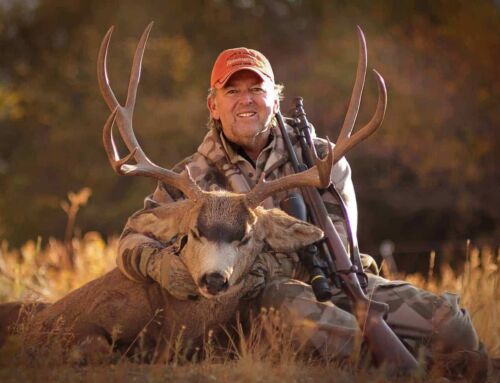After supper on August evenings my buddy Rick strolls down to the barn behind his house, anchors a spotting scope on a fence post and glasses the deer that come to munch the Imperial Clover that he sows in his 10-acre back field. At dusk 2 or 3 nice 8-pointers generally show up with a couple of spindly bucks, and a few does. Rick studies the bucks and patterns where and they walk out of the woods that border the field. Every fall he hangs a tree stand inside the wood line and tags one of the best deer.
You can scout and hunt like that if you own or lease a 20- to 50-acre tract of mixed fields, woods and thickets in good whitetail country. Some bucks that you glass on the property in August/September will disperse to core areas a mile or 2 away in October. But some of the habitual bucks will live there, practically in your backyard, throughout the season.
Many of us don’t have the luxury of walking out back and scouting the bucks we’ll chase this fall. But we can do the next best thing. Now is the time to drive to a small farm or woodland where you have permission. Climb a ridge and glass field edges, a gas right-of-way—you get the idea—at dawn and dusk. If you spot a good buck skulking around, there’s a good chance he’ll be right there when bow season opens.
A week before the bow opener, “speed scout” your little hunt zone. You may jump a few deer, but so what? These days, bucks are used to dodging people in the woods all the time. They’ll settle back down in a day or so.
Make a couple of big loops through a woodlot, looking for productive oak trees. Whitetails are like rude folk at a cheap buffet. They gobble up shrubs, fruit trees, garden crops, anything in sight. But deer shun most secondary foods when white and red oak acorns start dropping in September. Find a little ridge, flat or creek bottom teeming with fresh nuts and you’ll find deer sign. Big, splayed tracks and fist-sized rubs tell you a couple of bucks are close by.
Finish the preliminaries by scouting for bedding areas. Let’s say you’ll be hunting a 25-acre wooded lot in a subdivision. Well, look deep inside those woods for a one-acre swamp, a tangle of honeysuckle on a ridge, a 50-yard-long weedy ditch…. It doesn’t take much cover to hide a big deer. Large tracks and the first fresh rubs of September are a tip-off that one or two bucks are laying up in the area.
Hang a tree stand in those little woods and be ready when bow season opens.





